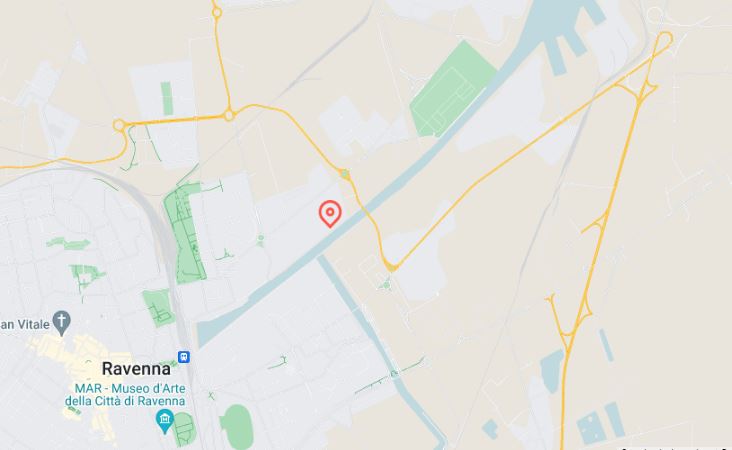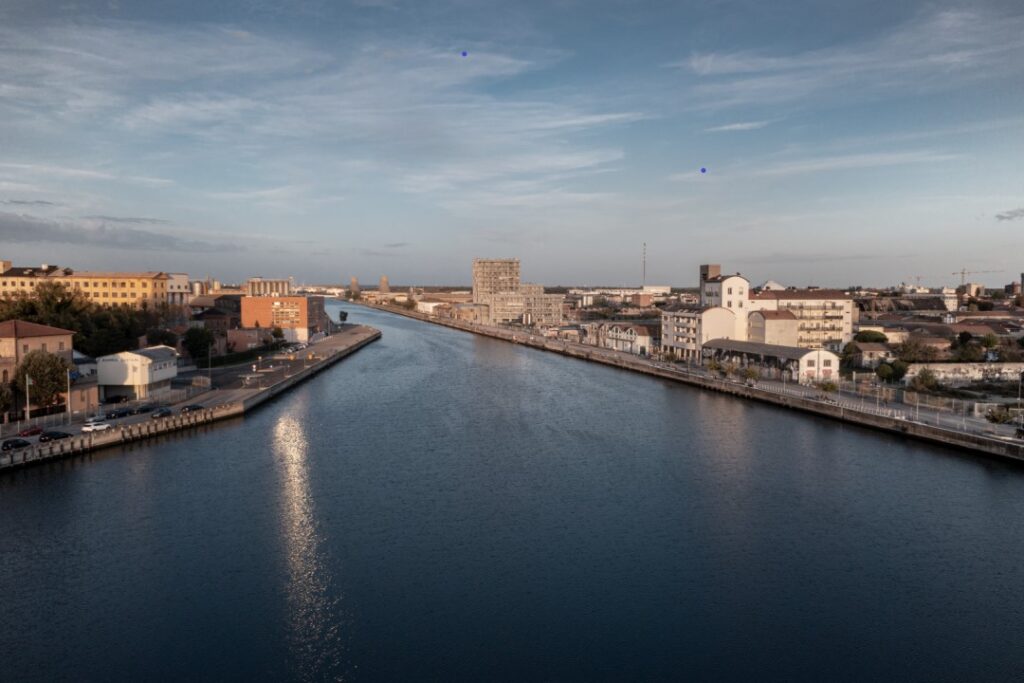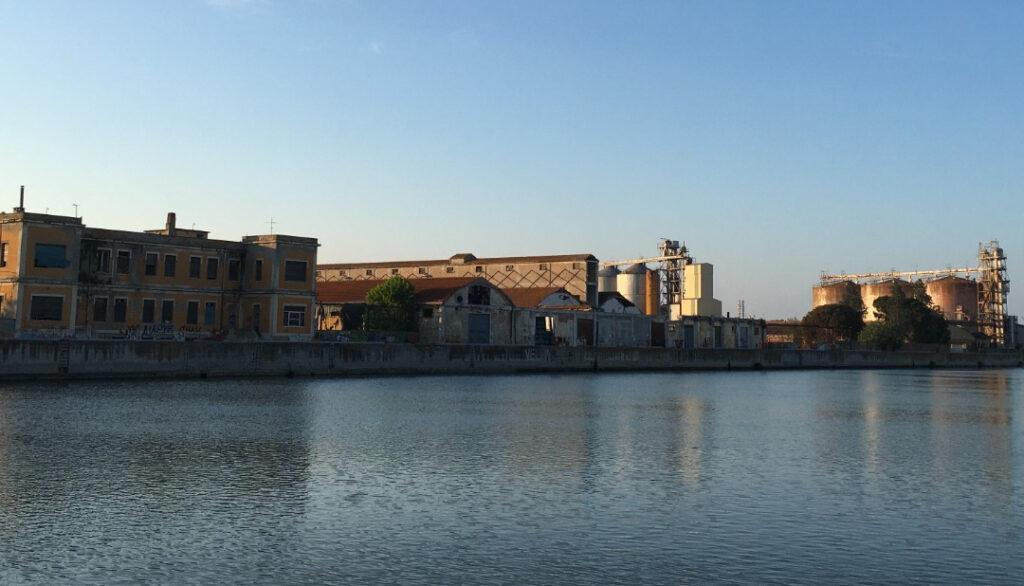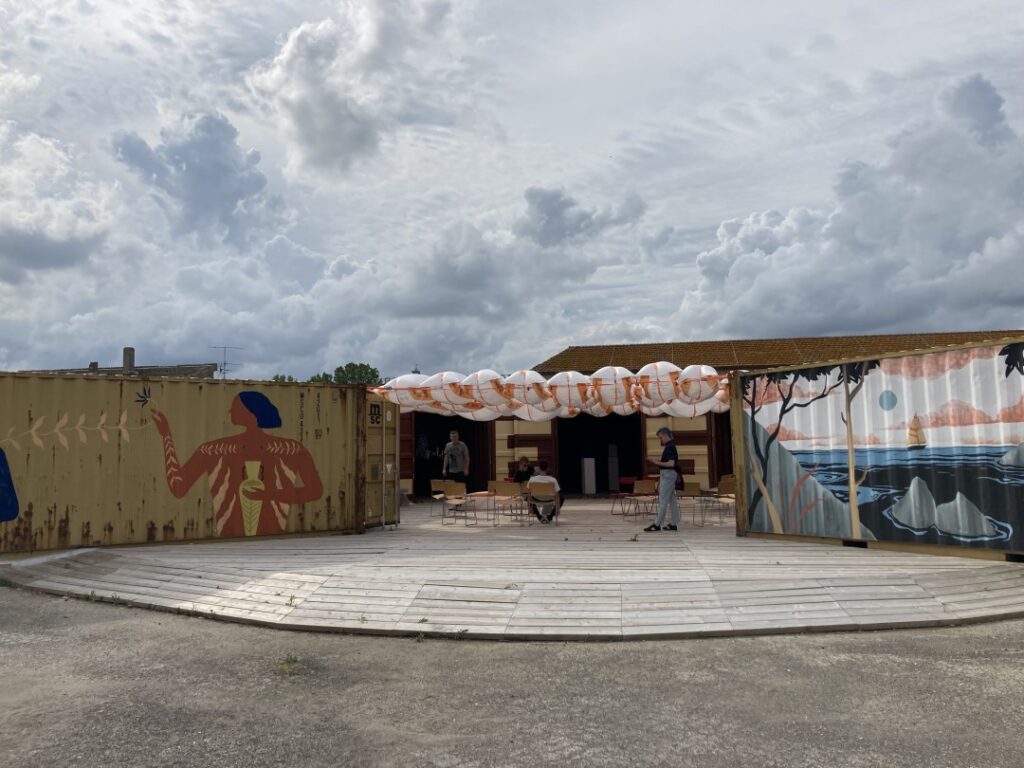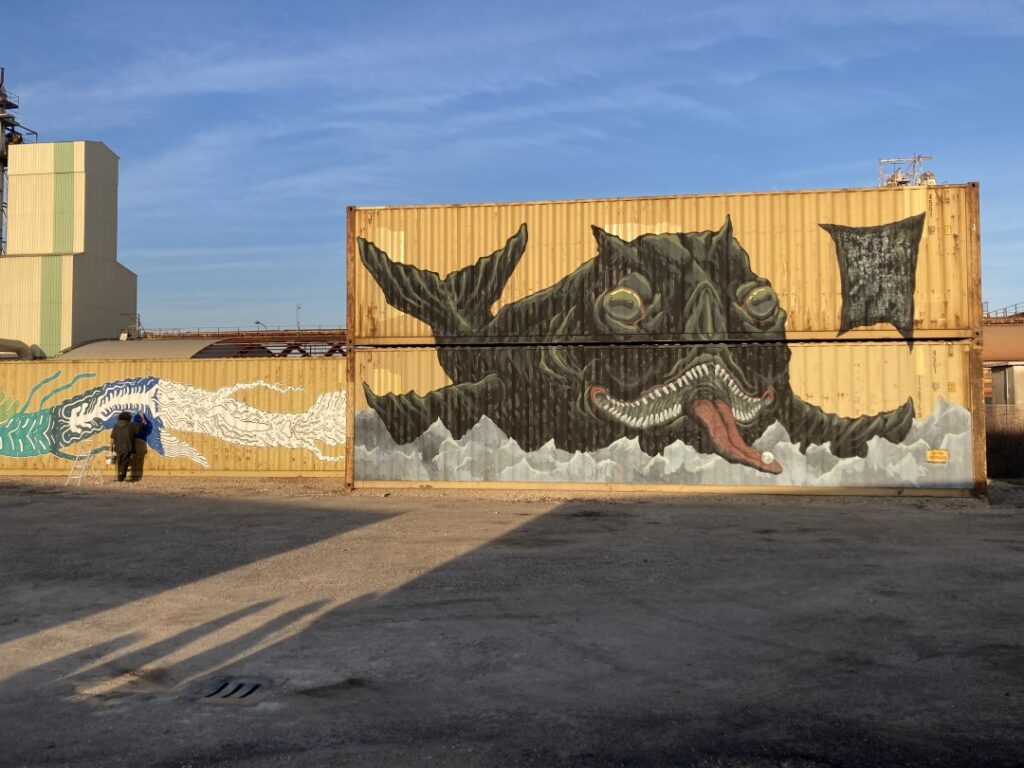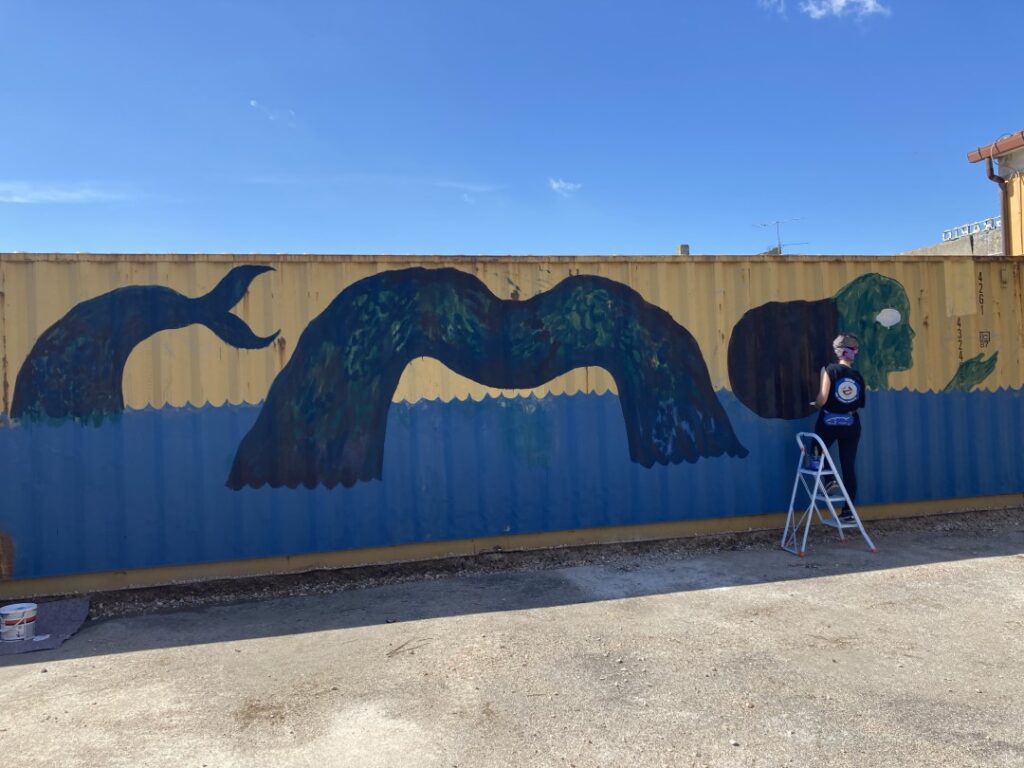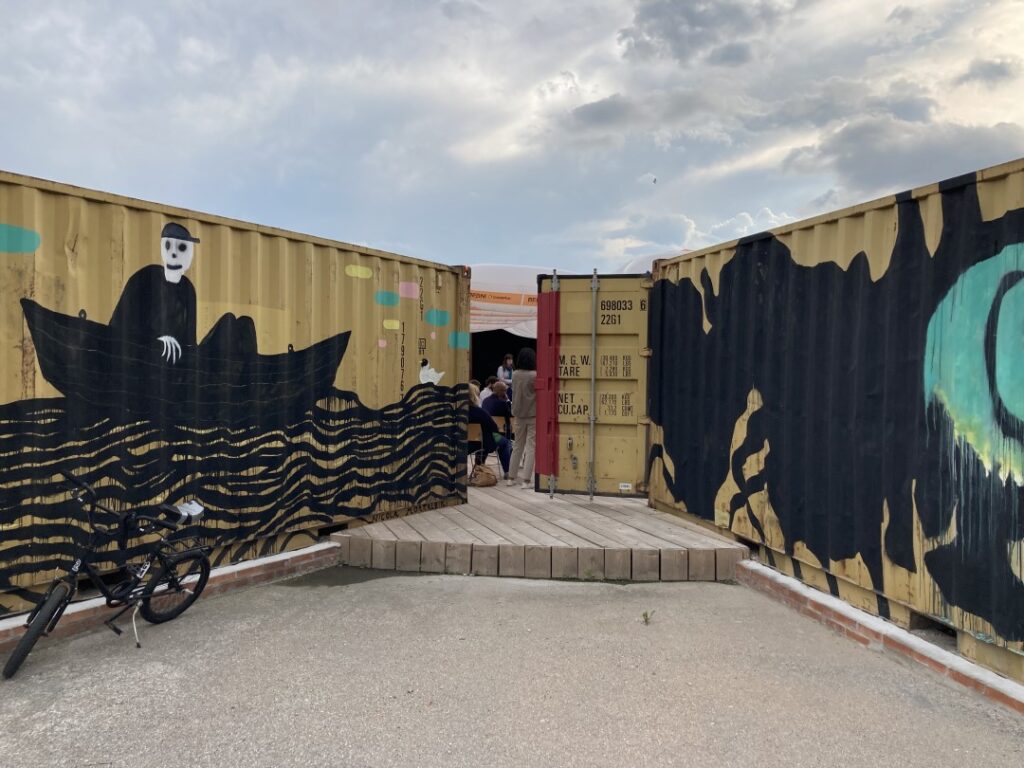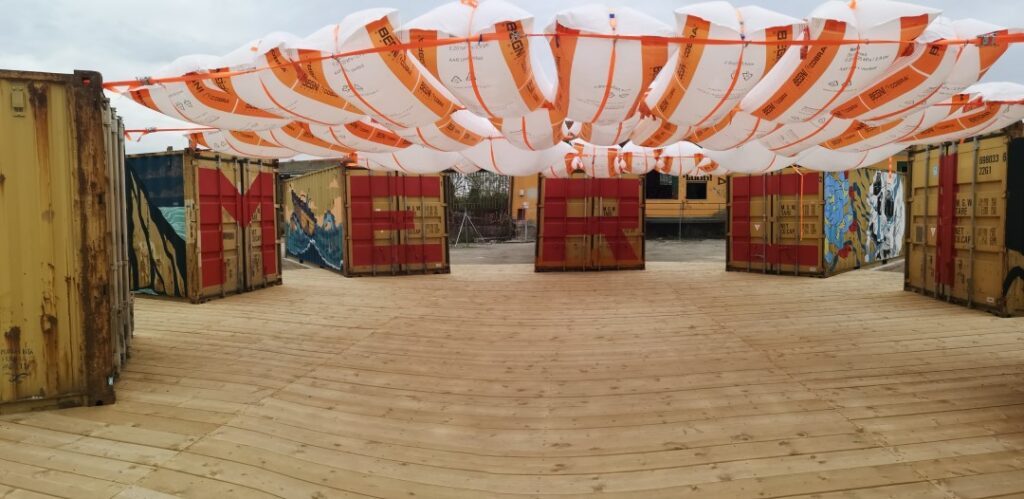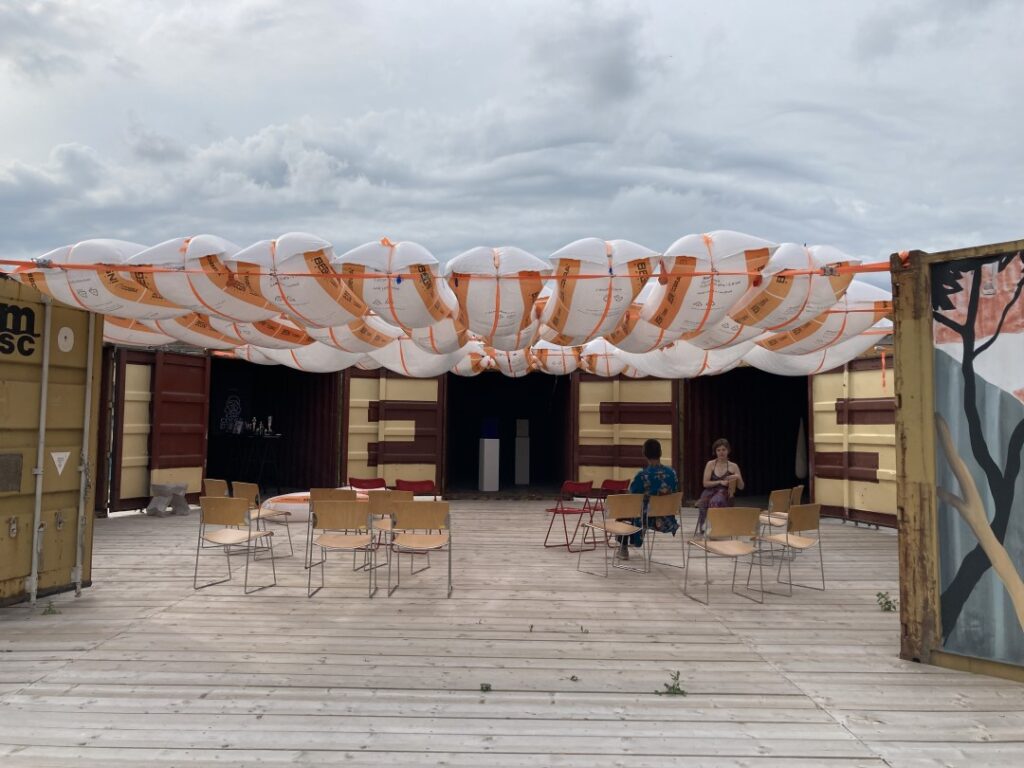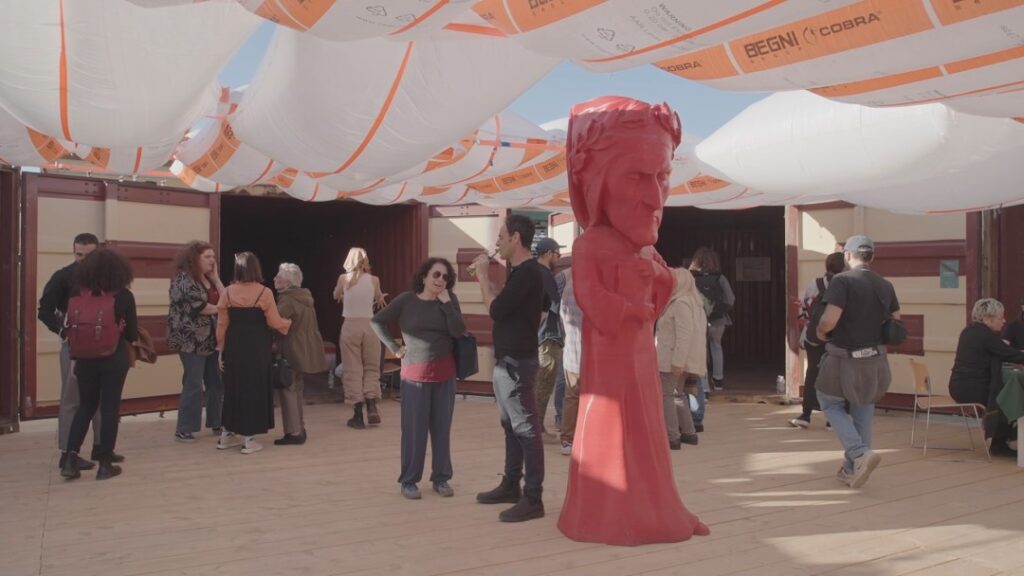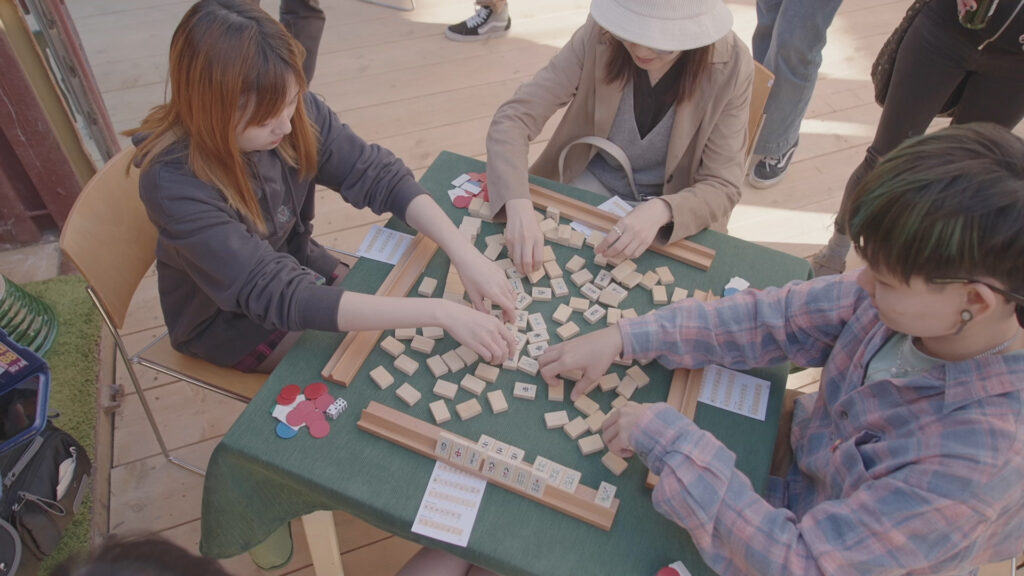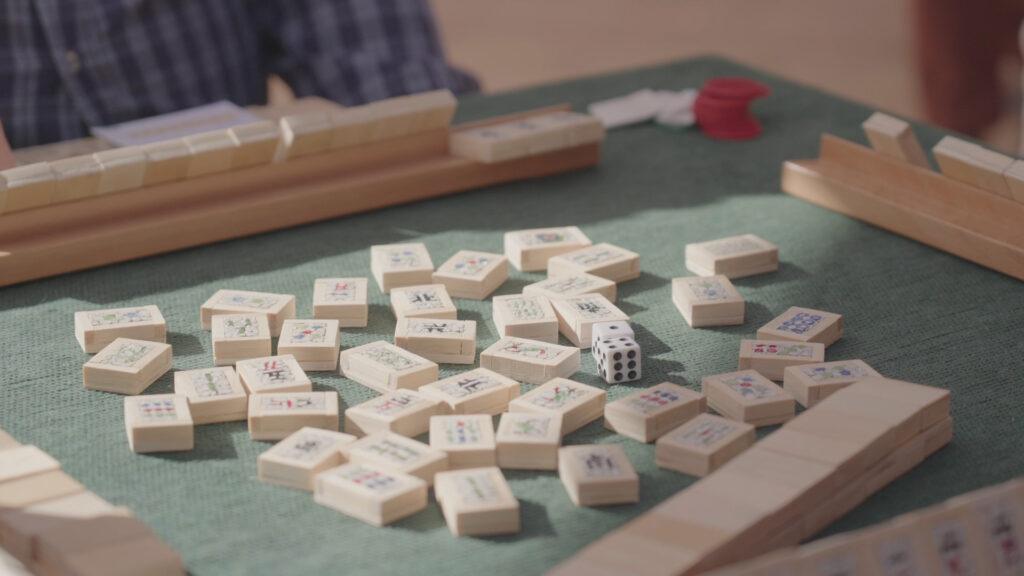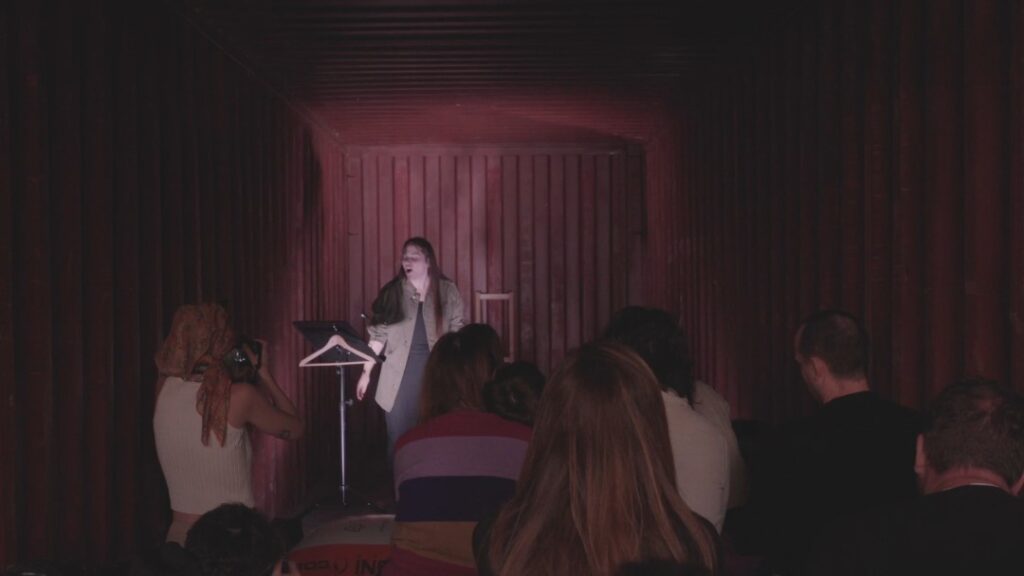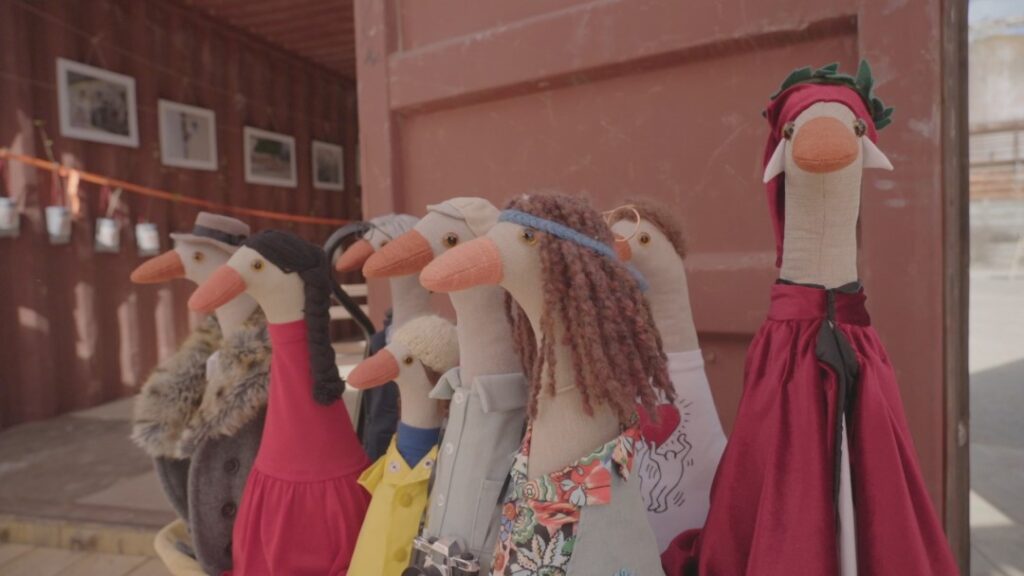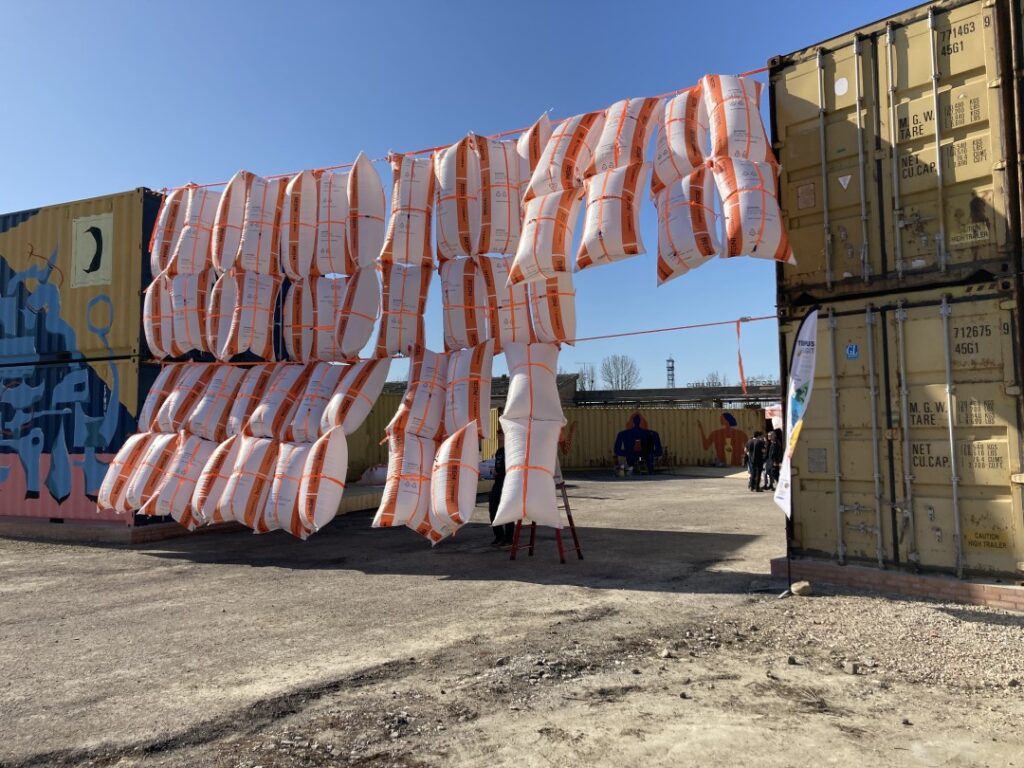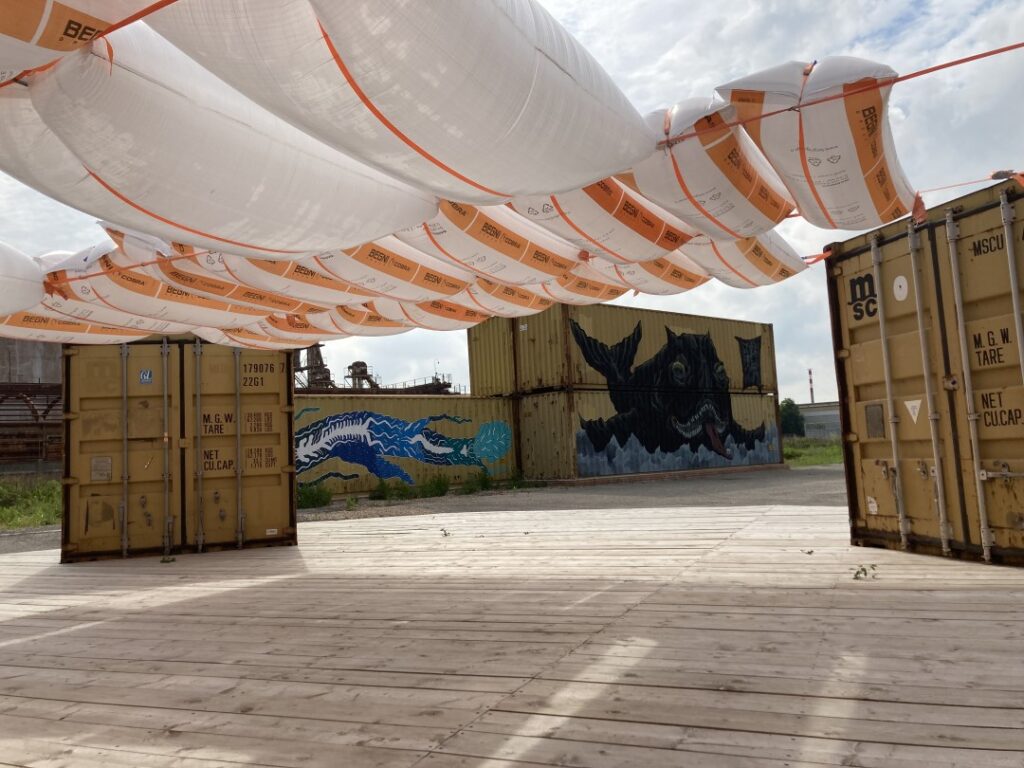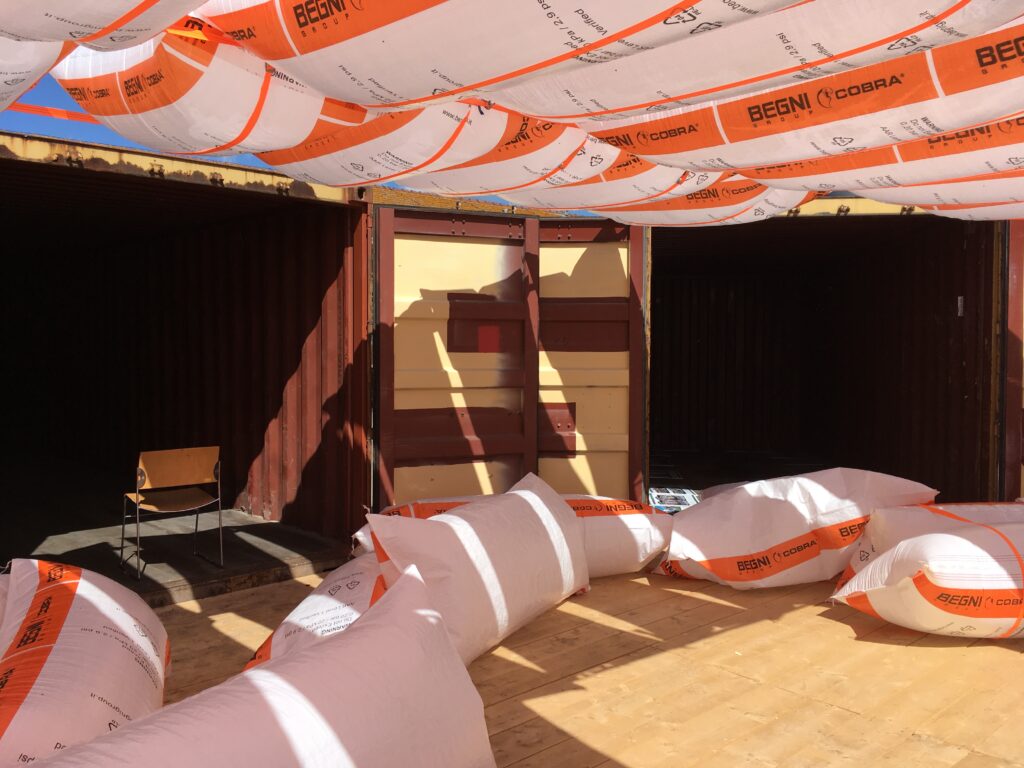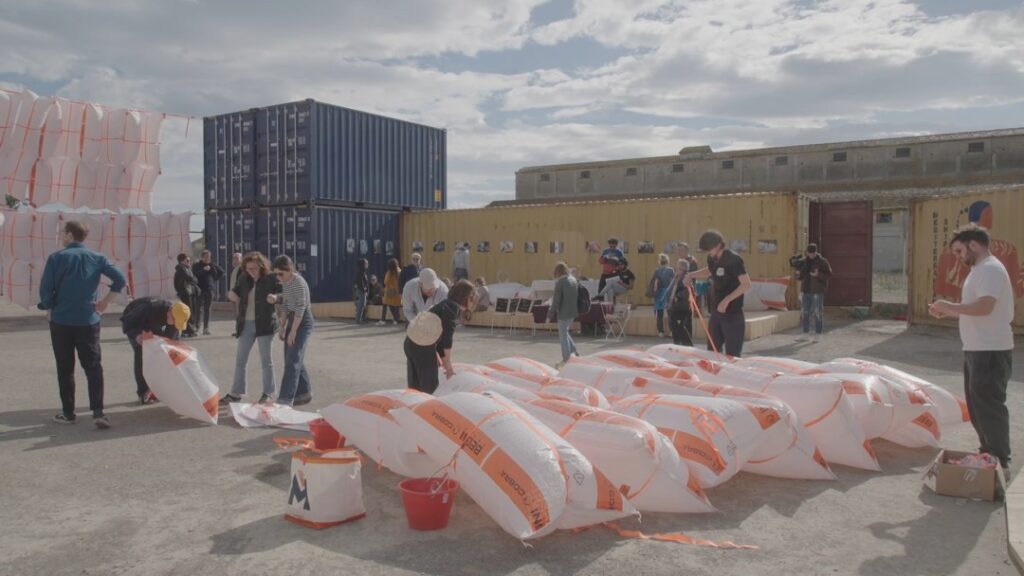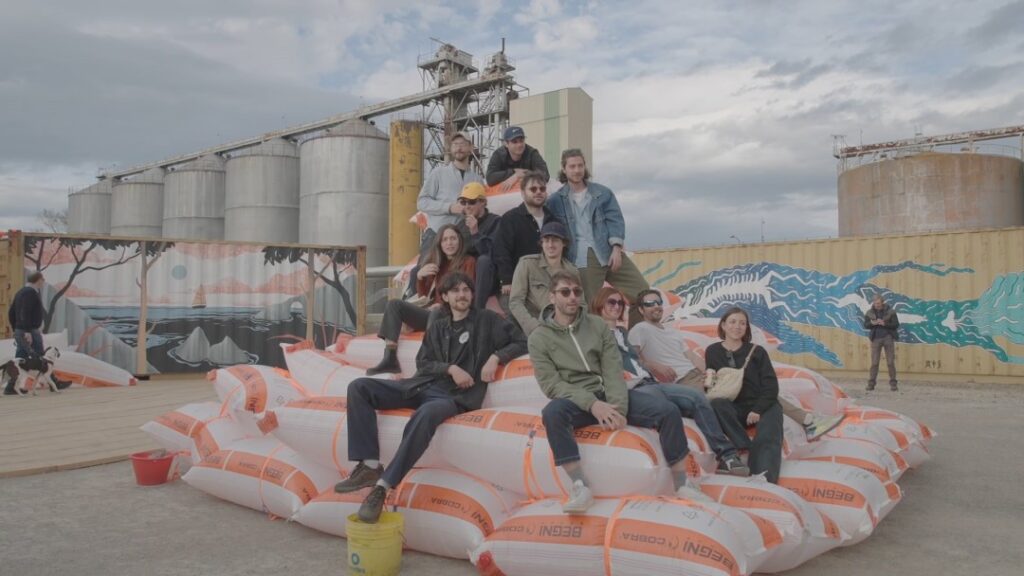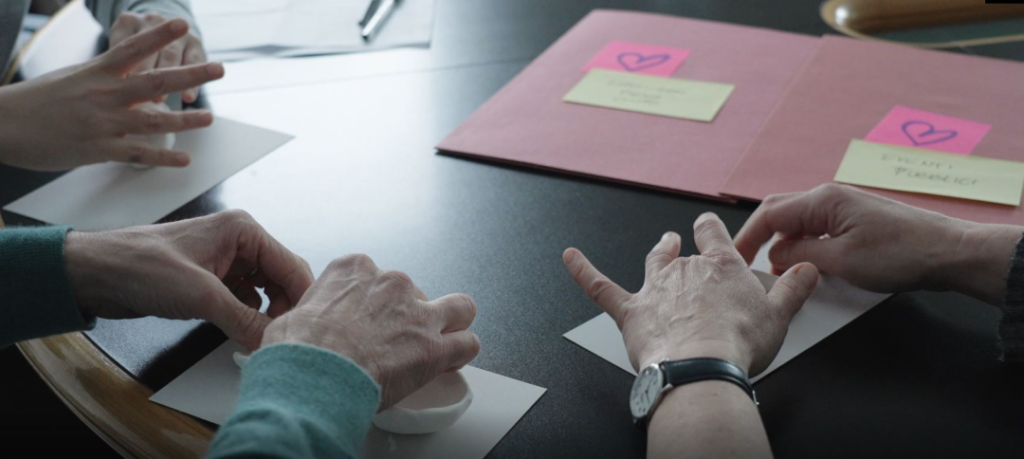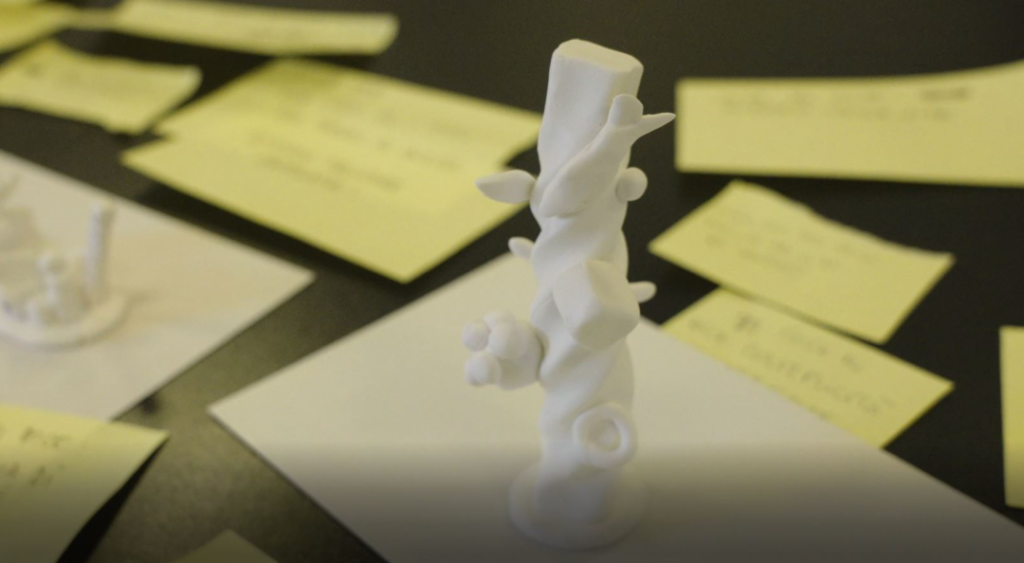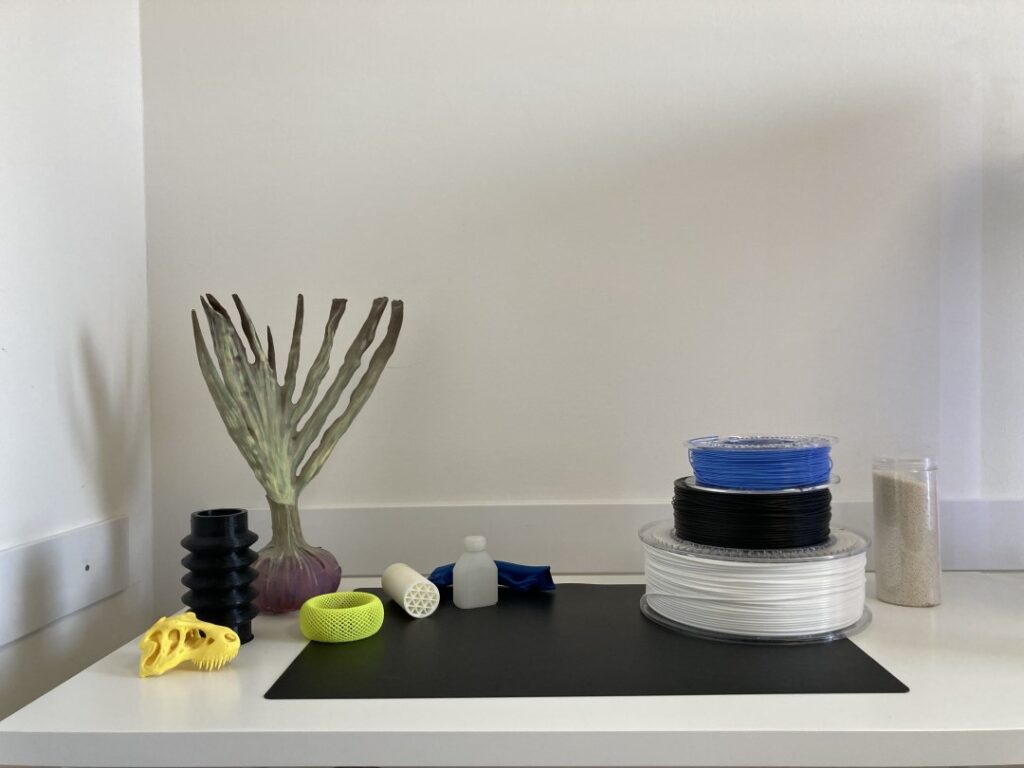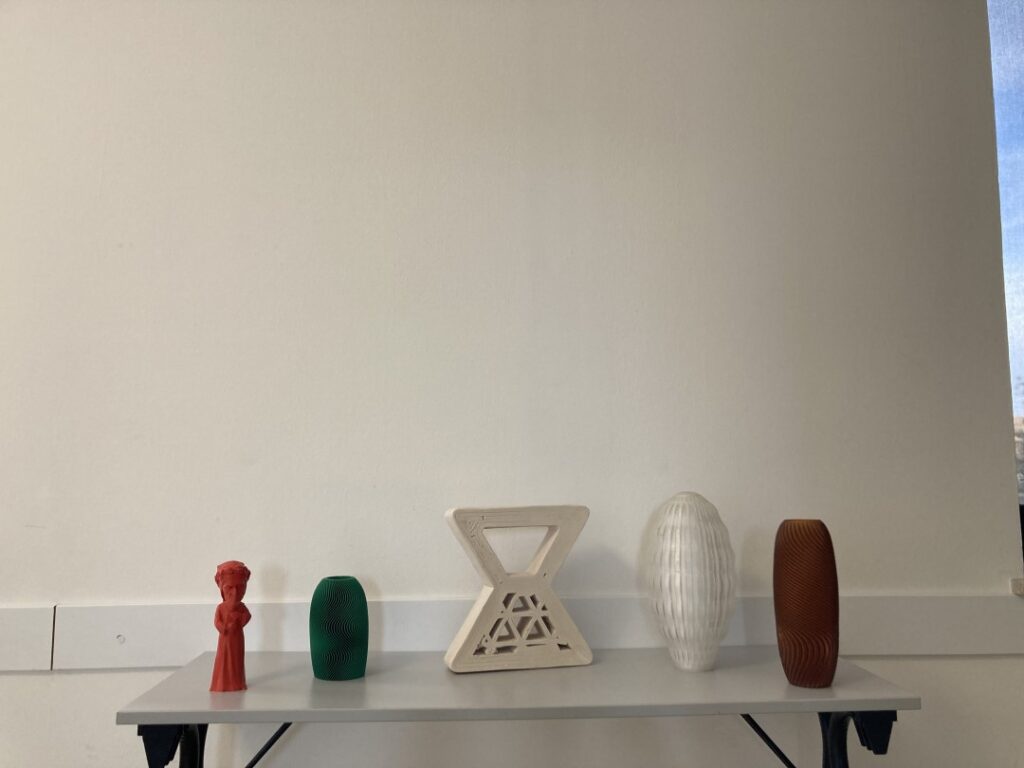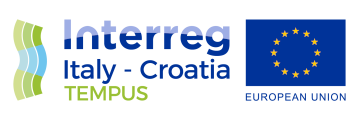The Ravenna Pilot launched the transformation of the Former Agricultural Consortium Area by experimenting with an ensemble of temporary uses intended for the creation of a place for people, practices and artistic languages to meet, exchange and work together
TEMPUS Area
The site selected for implementing the Ravenna Pilot is the historic headquarters of the Agrarian Consortium of Ravenna, overlooking the left bank of the Candiano canal, which runs through the Darsena, the city’s dockyard, to the Adriatic Sea. The Darsena is Ravenna’s old commercial canal port, now considered an urban waterfront bridging the historic city center and the sea. It is also the city’s regenerative engine, since it is currently undergoing an innovative and experimental regeneration process, which began in 2015 with the POC (Municipal Operative Plan) Darsena, but, since the 1990s, several reactivation/redevelopment projects have been implemented in the area, especially on the right bank of the Candiano. The former Agrarian Consortium, which is part of a larger disused area, is the first private reactivation project implemented on the left bank of the Candiano Canal. Due to its characteristics and location, it represents an ideal venue to promote the encounter between the different contexts and souls of the neighborhood. In fact, the Former Agrarian Consortium is located near the movable bridge that crosses the Candiano, thus linking the left side to the right side of the canal, ideally connecting the suburban residential compartment that arose along Via delle Industrie (left bank) with the multicultural Trieste-Gulli residential compartment (right bank).
From the idea to the realisation
The main TEMPUS objective is to experiment with temporary uses as trigger actions aimed at improving the quality of the tangible and intangible, natural, and cultural heritage of port cities in the Adriatic area.
In the Agrarian Consortium, it was decided to implement a Temporary Use Action (TUA) container-based, and test the effectiveness of business or policy choices aimed at enhancing the value of the asset by establishing pioneering activities within its context. In fact, initially the plan entailed the creation of a space to host a first core of Cultural and Creative Industries and research centers, aiming to create a hub that would bring value and innovation to the area and, above all, enhance the heritage linked to the history of Ravenna’s port and the city’s relationship with water.
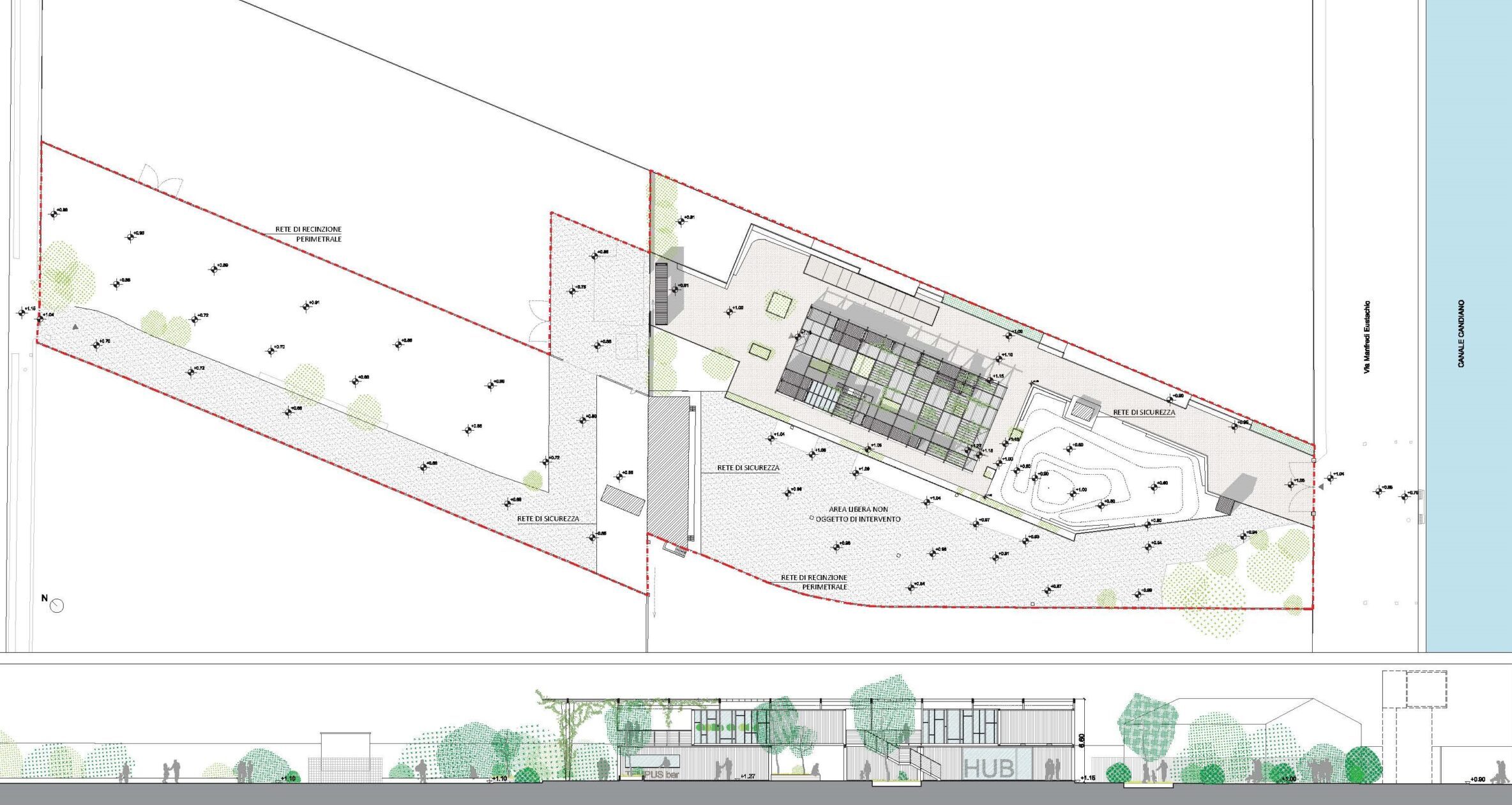
For various reasons, and particularly the increase in costs related to materials, it was necessary to take over the project and modify it, maintaining its goals but, on the one hand, simplifying the infrastructuring of the space, and on the other, enhancing the temporary use experimentation by directly involving CCIs in the space activation.
The new pilot was conceived in such a way as to create a temporary stage available to the city in which to create, thanks to the experimentation of different cultural practices, the encounter between different artistic languages and the collaboration with and among the cultural and creative realities of the territory, a renewed and collective space, a cultural device in which to meet and confront each other, learn and experiment together.
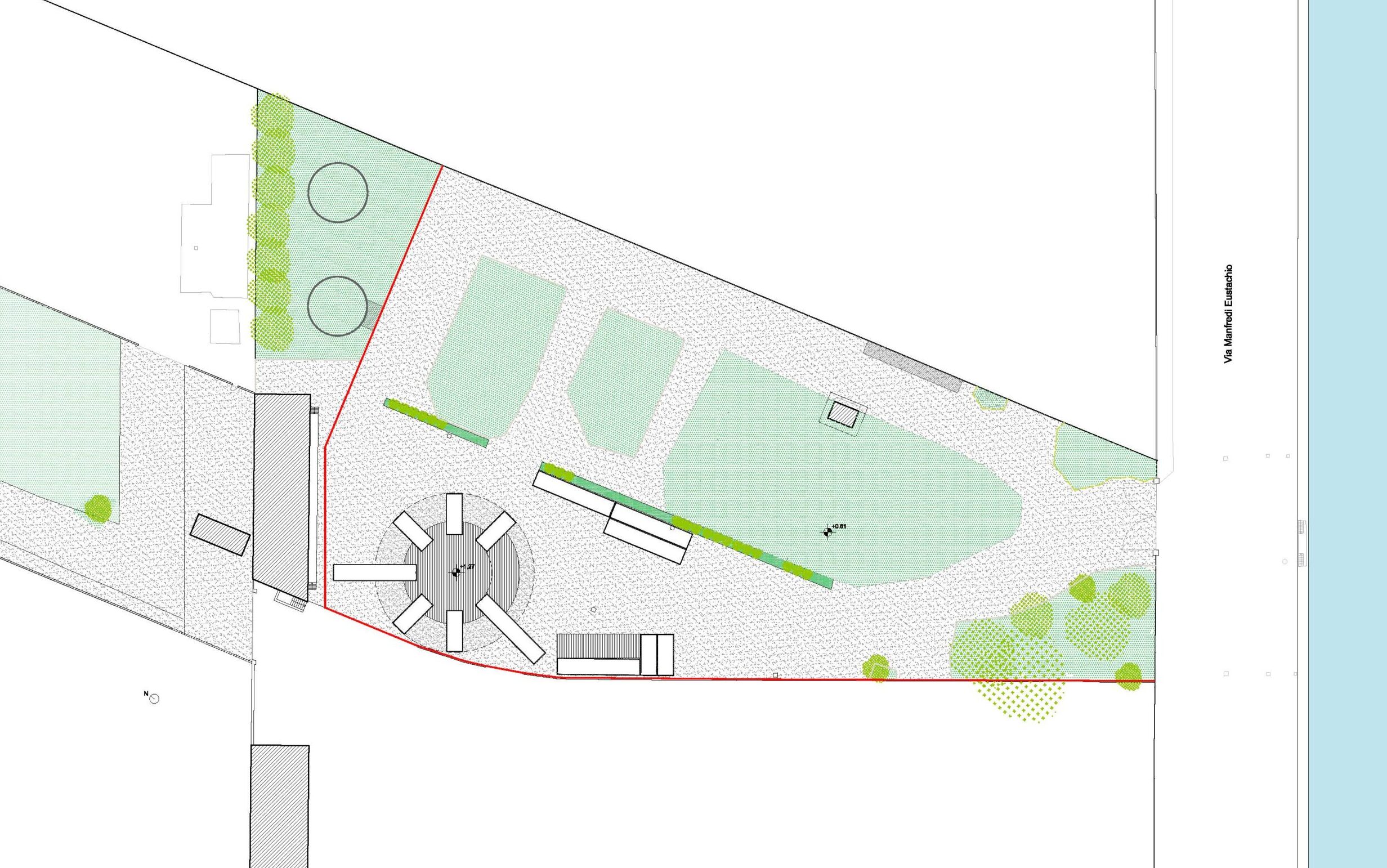
The construction site
The infrastructural work was limited to the placement of 17 shipping containers arranged to design a versatile, multipurpose space that is suitable for hosting temporary activities and initiatives of different types and duration.

Defined by 7 containers positioned in a circle around a rough wooden platform, a circular plaza is formed, to function as a meeting point and junction for everything that can be realized outside and inside the containers. The containers, in turn, in addition to becoming themselves the object of an urban art action and be transformed into an art installation and autonomous work of art, can be used as minimal units suitable for hosting workshops, art ateliers and/or temporary exhibitions.
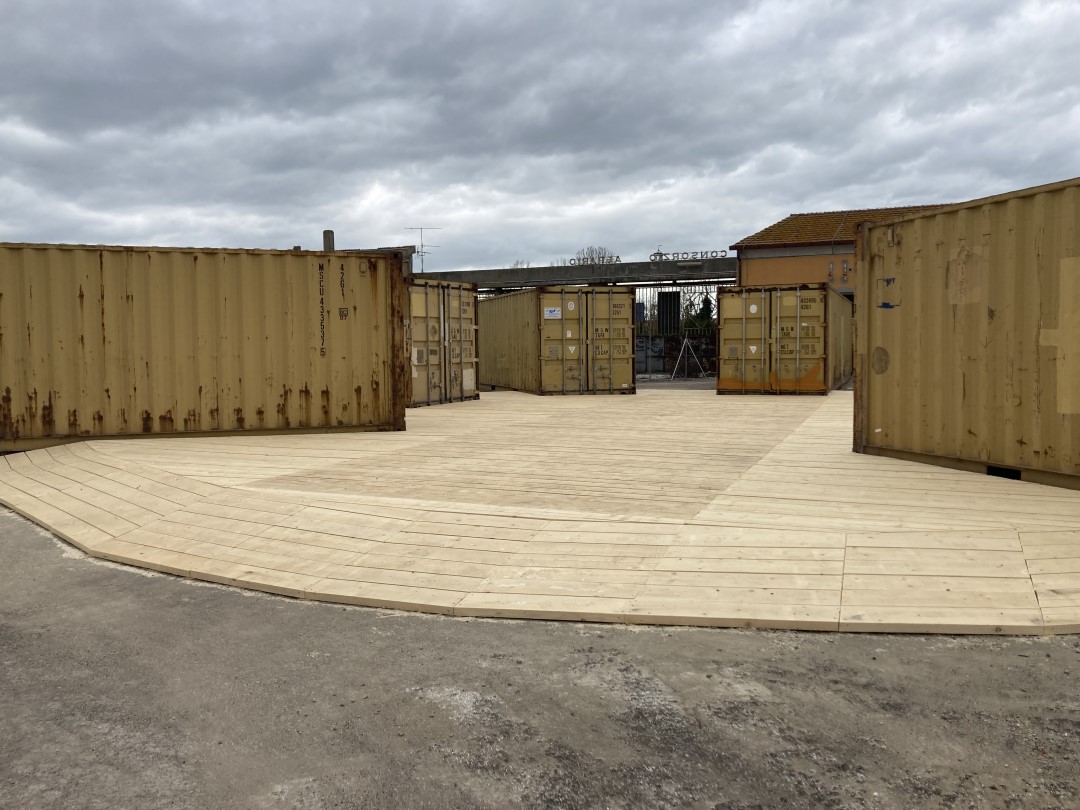
TUA Opening
To open the newly created infrastructure to the public and activate it, the rich program of initiatives, activities, and events TEMPUS Fugit has been planned.
Maintaining a coherence with the TEMPUS Virtual exhibition, the theme of the 4 fluxus to narrate the port (Culture, People, Materials and Technology) has been followed also for the TEMPUS Fugit program. This way, a strong bond has been created also with the physical exhibition, held simultaneously in the spaces of the University’s Department of Cultural Heritage, which is located in the very center of Ravenna.
The two events are connected by being guided and organized by the 4 fluxus theme, and, while the exhibition represents artistically the past of the city with archaeological finds, the TEMPUS Fugit conveys, through art, a take on contemporary issues, with a glimpse to the future.
In this framework, via public Call to Action, 4 CCIs have been identified to design and carry out a series of complementary temporary actions, starting from broad indications related to each theme (fluxus), not only in the space of the TUA but also in different locations in the city, so as to draw more attention to the TUA Opening. The enterprises identified for the task are the following:
- XX APS: Fluxus Culture
- Rete Almagià. Fluxus People
- DENARA: Fluxus Materials
- WASP: Fluxus Technologies
FLUXUS CULTURE – Flux off: Time, Journey, Diversity Urban Art Festival
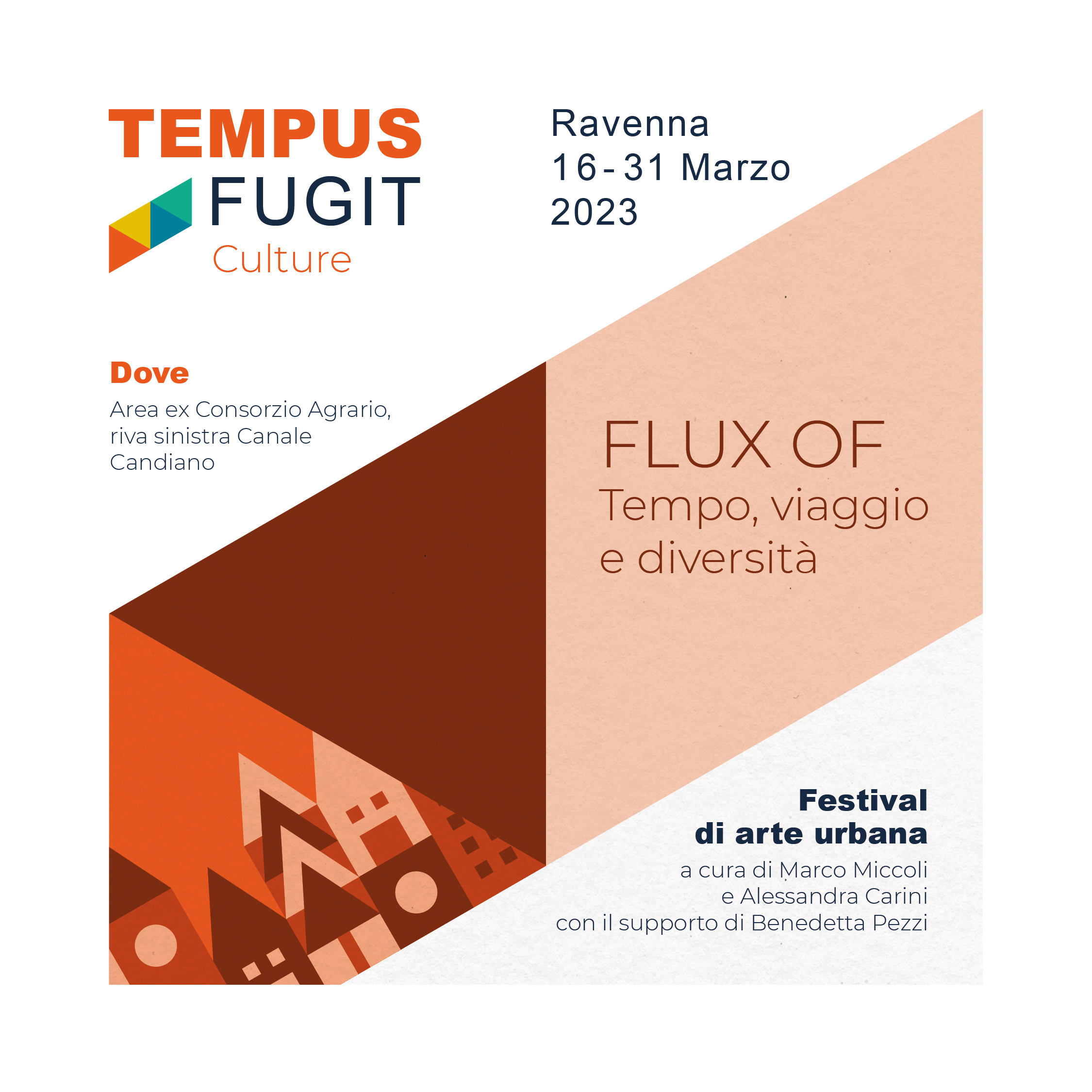
The Fluxus “Culture” draws on the concept that port cities are places in which different cultures meet and merge. Taking on this, street art, which is a very relevant part of the Darsena’s contemporary culture, has been chosen, to involve artists from different contexts and cultures in the Flux off: Time, Journey, Diversity Urban Art Festival entailing the creation of murals on the containers placed in the area, generating an open-air gallery where different cultures meet through art. This way, for the lifespan of the container-based temporary use, it will be an artistic point of reference for the city users, to be lived by the citizens and included in touristic paths.
The artists involved were: Alessandra Carloni, Alessandro Pixa, Andre The Spider, Dissenso Cognitivo, Kiki Skipi, Lisa Gelli, Margherita Paoletti, Nicola Montalbini, Virginia Verona and Yopoz; special guest Biancoshock. The artists were asked to draw inspiration from the short story “il Colombre”, by Dino Buzzati, to connect the new artworks with the iconic mural painted by famous artist Ericailcane in 2011, on the facade of the former Mulino Spagnoli, one of the very few pieces on the left side of the Candiano. In facts, thanks to the street art Subsidenze Festival, the part of neighborhood on the right side of the Candiano canal (the Gulli-Trieste residential area) has already been richly decorated with many international artists’ works. Through this festival, TEMPUS Fugit promotes this art form also on the left side, aesthetically connecting the two.
FLUXUS PEOPLE – New Maps
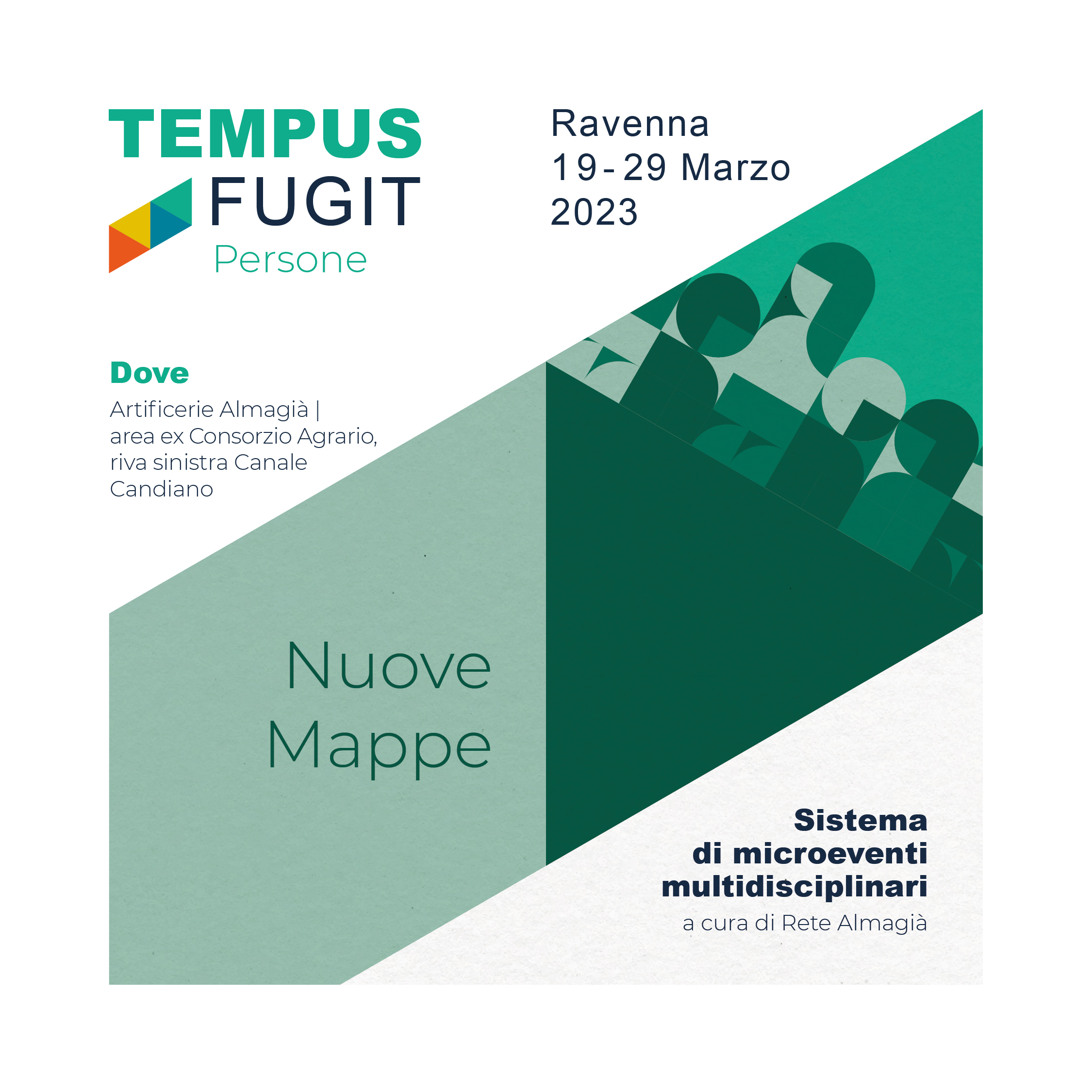
The flux of people through ports have been conveyed by Rete Almagià, by mixing different artistic languages to explore the relationship between identity and the territory, organizing a system of multidisciplinary micro-events composed of practices, experimentations, and creative exchanges inside and outside the containers.
Creating a kaleidoscope of poetic and emotional suggestions, and triggering possibilities for interaction and collaboration among the participating artists, inside each container Rete Almagià has organized a different artistic action:
Moreover, to highlight the relation between different places, the artist Silvestroni was invited to display his “Paperi” (Ducks), an ongoing non-performance consisting in placing ragdolls of ducks, often representing famous artists’ traits, in accurately selected spots, thus connecting different contexts and places through art and artists. Within TEMPUS Fugit, the artist prepared an exhibition of photographs taken on occasion of 2022 Documenta festival, held in Kassel.
Outside of the containers, Rete Almagià organized “Interferenze”, a performance of bodies exploration to measure their dimensions, time, reactions and relations, and “Arzanà”, a collective sowing performance to unite the two ecosystems in the area: the natural, uncultivated one, and the cultural one where the containers are installed.
FLUXUS MATERIALS – Just in Tempus

The fluxus of materials is focused on the goods being transported in and out of Ravenna. Following this theme, the architects of the association DENARA chose to re-use inflatable airbags, straps and tensioners usually employed in the transportation of goods to support them inside the containers. Through self-construction open laboratories, these objects were transformed into furniture for the comfort of visitors, covering, and even a monumental entrance portal for the Plaza.
FLUXUS TECHNOLOGIES – WASP
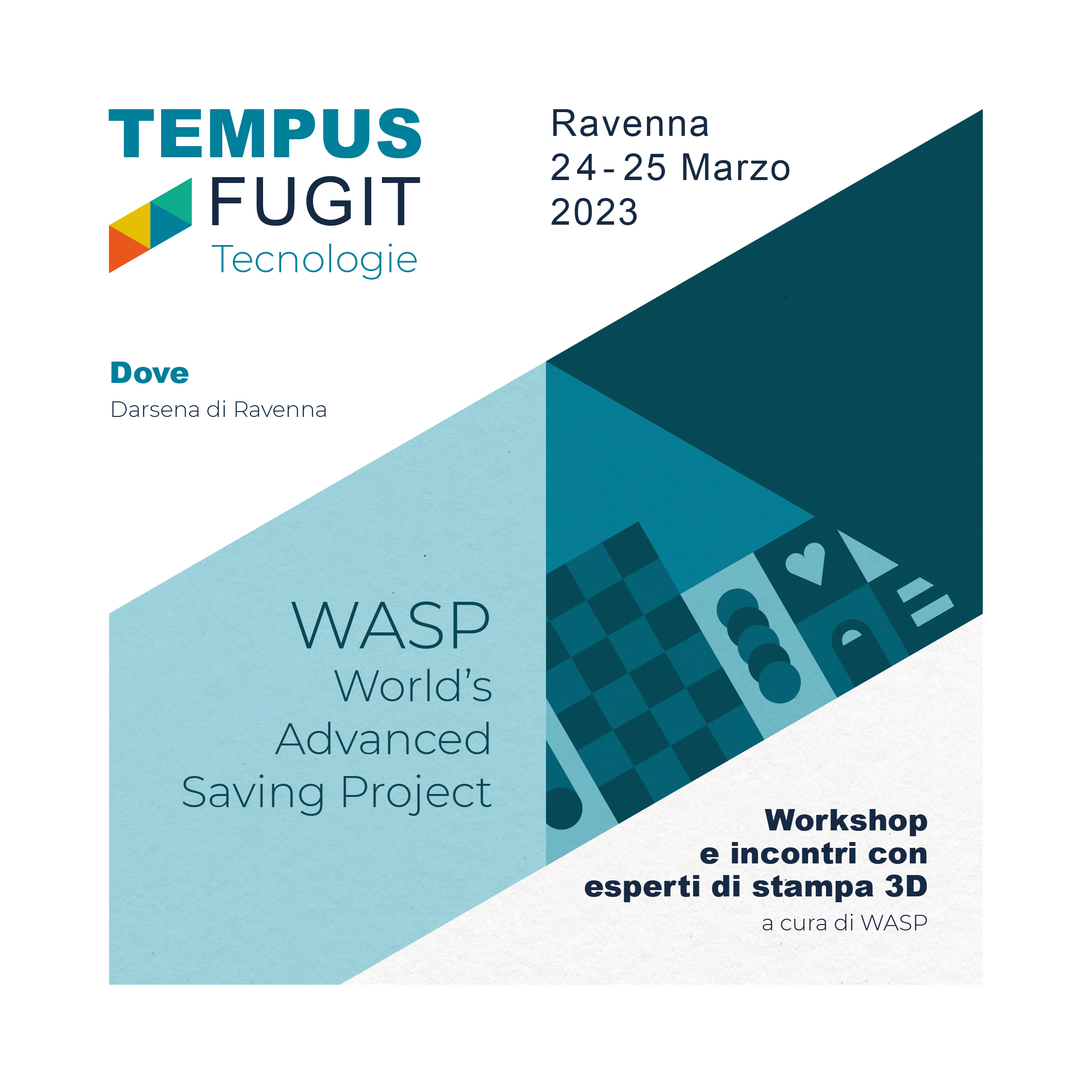
In a two-day event dedicated to 3D printers and additive printing, WASP technicians, supported by a number of local artists and researchers (among which the Rizzoli Orthopedic Institute), held dissemination meetings and workshop aimed at different targets (students, businesses, citizens) with the aim of making people understand how contemporary machines can enter the creative process and support the evolution of a new way of making art and being artisans.
A symbol was displayed in the Tempus Area as an emblem of the connection between technology and humanistic culture: a large red Dante Alighieri, 3D printed by WASP. The work was carried in a procession that strengthened the connection between the historic center and Darsena and was placed in the center of the circular plaza. This curious but reassuring presence reinforced one of the cornerstones of the Tempus project: the importance of knitting together creative practices throughout history, promoting evolutionary and not necessarily disruptive innovation.
Epilog
At the end of Tempus Fugit, two important results were obtained: many people asked to use the area for the organization of events, festivals or performances, and the associations involved in its implementation decided to continue the collaboration, participating in the Creative Living Lab call promoted by the Ministry of Culture, giving continuity to the experience. Area Tempus has been activated and all the conditions have been created for its rooting in the urban fabric of the city!
